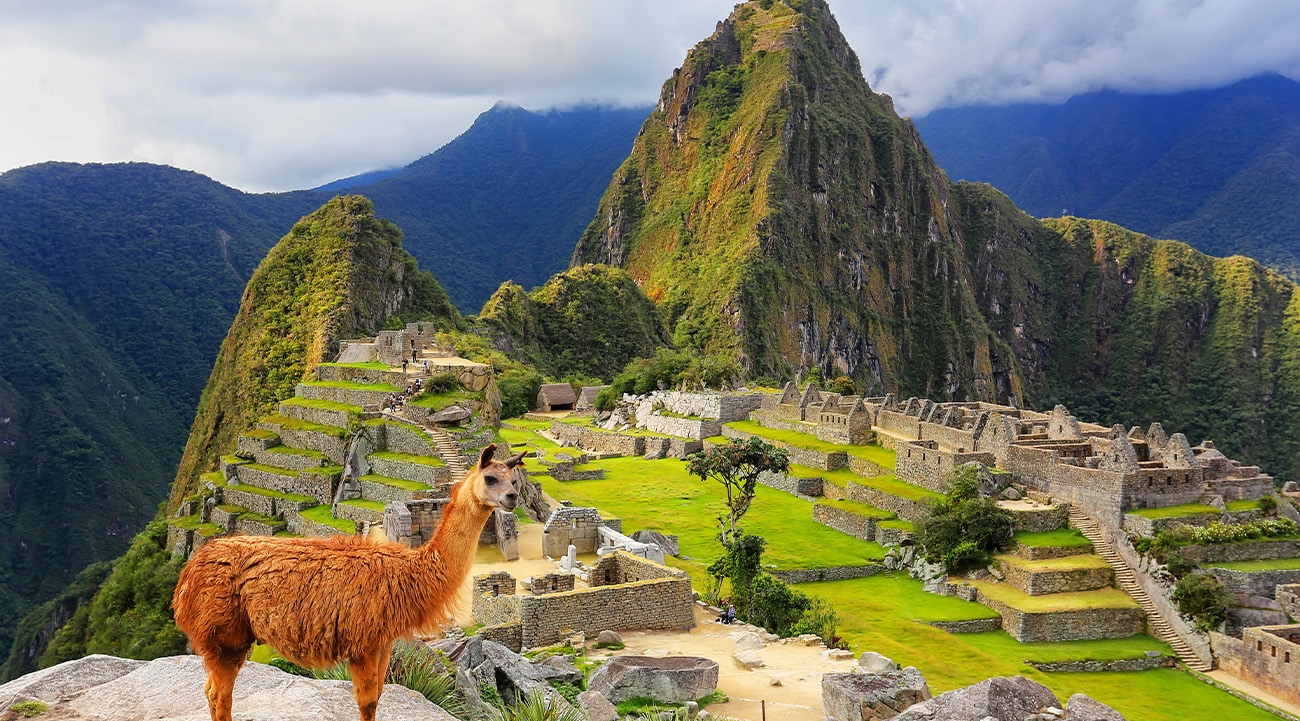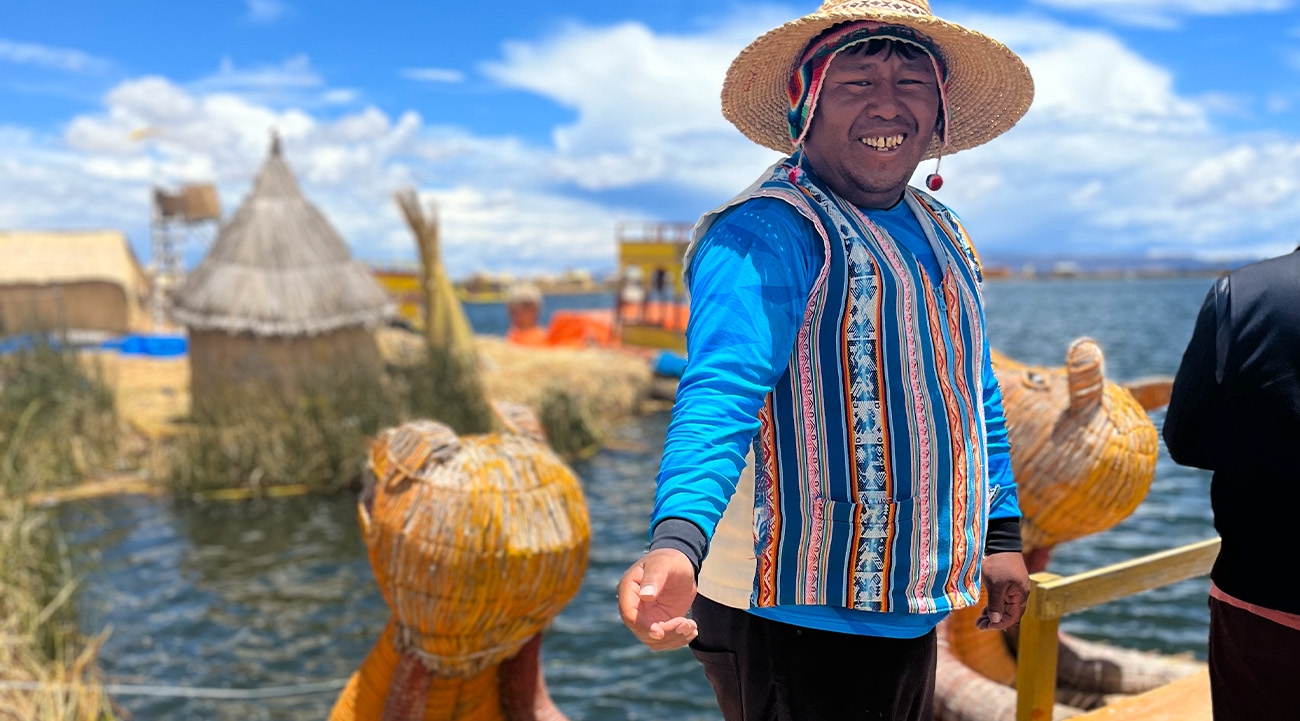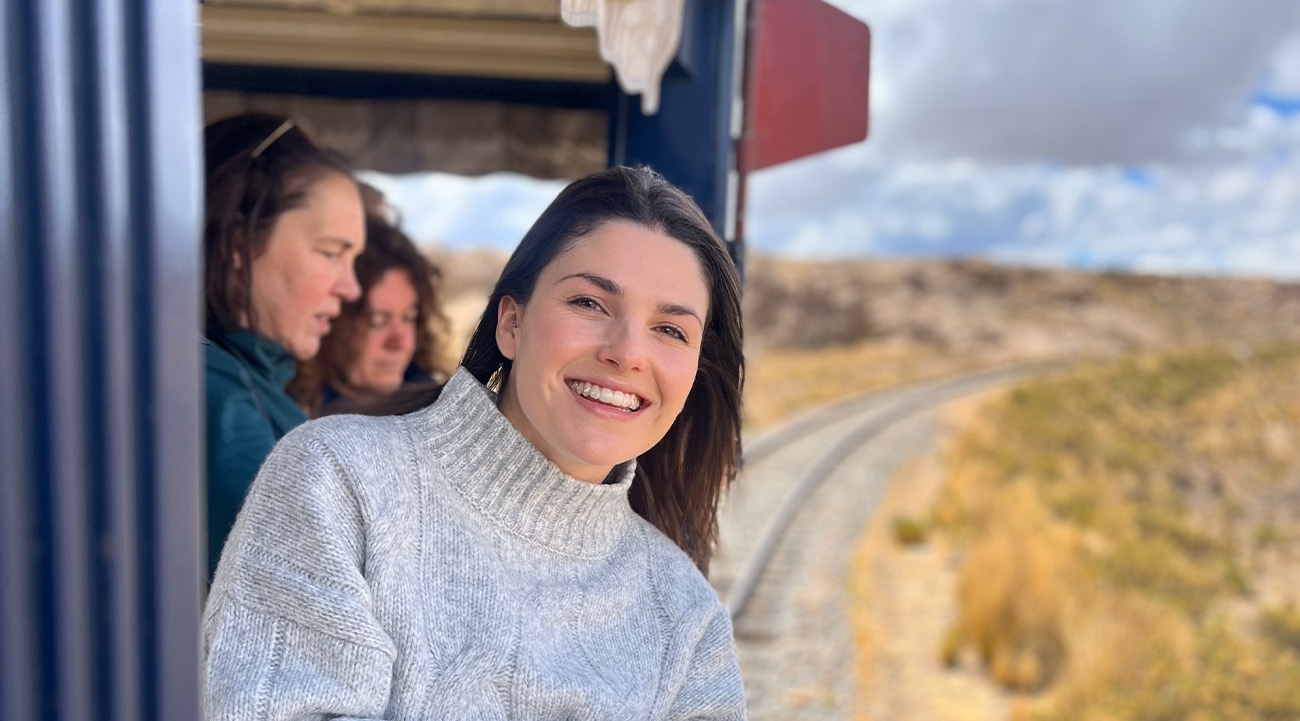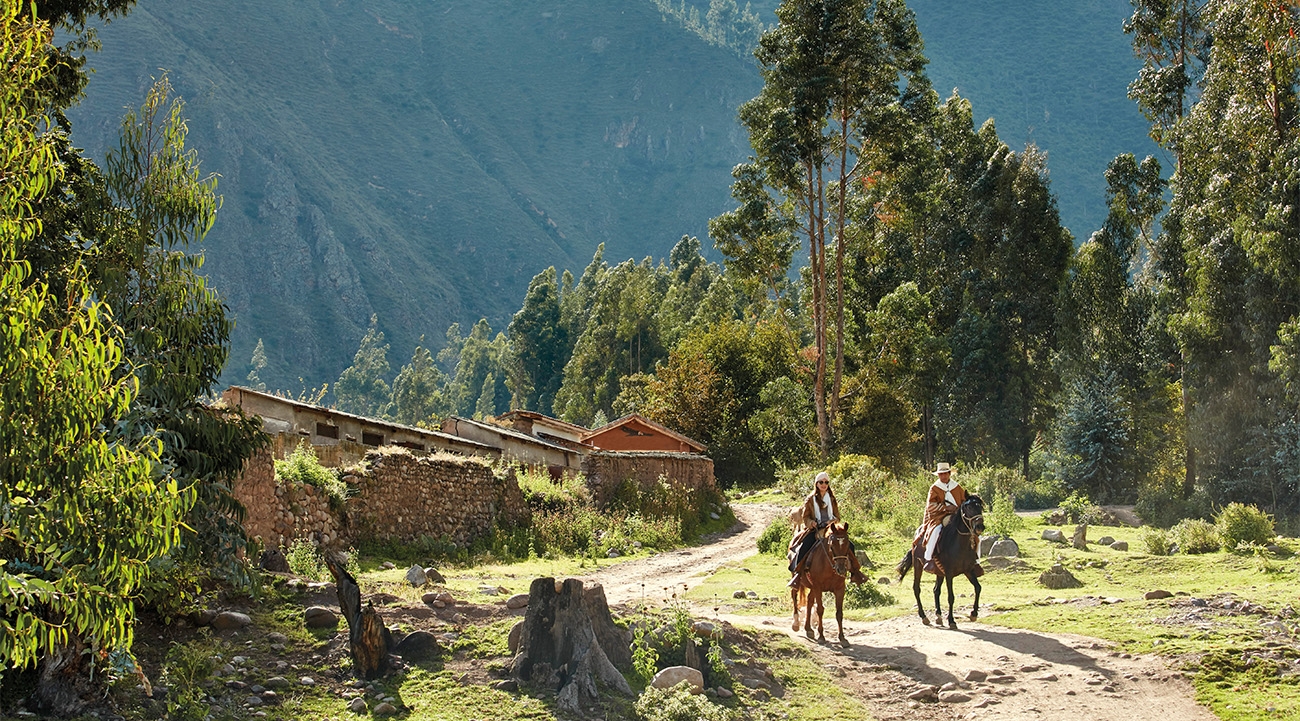Perfect Peru: We journey through this fascinating country in style with Belmond
“Mother Earth gives us everything so we have to give back to her,” Victor says, placing a handful of chincho atop a smoking hole in the ground. The native Peruvian herb is for good luck, he tells me earnestly. In the leafy grounds of Rio Sagrado, a peaceful Belmond hotel tucked into the mountains in Peru’s spiritual Sacred Valley, Mother Earth – or Pachamama in Incan mythology – does indeed feel all around: in the fragrant scent of palo santo smoke that carries on the cool wind, in the gentle meandering of the nearby Urubamba River, and amid the flock of friendly resident alpacas picking their way across the grass, unaware of the soul-stirring beauty of their home.
Chef Victor and his team are preparing a traditional pachamanca – Peru’s oldest culinary tradition, which uses hot stones in a pit to slow-cook marinated meats, vegetables and legumes. Victor layers Andean produce with aromatic herbs and covers it with blankets and soil. Chincho is the final flourish. After feasting, we enjoy a Show of the Gods ceremony courtesy of local performance artists and Pachatusan musicians, and toast marshmallows over a glowing firepit. Later, we retreat to our rooms, where glass-walled showers give way to mountain views, and beamed ceilings preside over a huge bed, with an alpaca-shaped hot water bottle waiting inside.



Unique journey
It’s the start of an intoxicating week-long odyssey throughPeru with Belmond, whose established portfolio in the destination makes it anobvious choice for affluent clients. With six hotels and two trains dottedbetween the mountains, jungle and coast, Belmond can afford travellers an arrayof enriching experiences, from ancient Inca traditions in the Sacred Valley toracing along the rails to the Andean peaks. Peru’s return to tourism, ofcourse, hasn’t been straightforward.Just as the destination was celebrating the lifting of all Covid-19restrictions last December, the country was plunged into political crisis whenthen-president Pedro Castillo was removed from office for attempting a coup. Ittriggered a series of political and social protests which continue to rumbletoday, but a fierce appetite for this beguiling South American destinationremains.
Unsurprisingly, Machu Picchu remains the key draw. There’s awealth of ways to visit the 15th-century Inca citadel, standing at the meetingpoint between the Peruvian Andes and the Amazon basin, but there are few quiteas luxurious as the Hiram Bingham train. Named after the American explorer whorediscovered Machu Picchu in 1911 alongside local Indigenous farmers, hoppingaboard feels like stepping back in time to a bygone era of glamour andelegance. Before boarding, we offer a gift to the Earth as a sign of respectfor Pachamama, holding a trilogy of coca leaves to the mountains and blowingthree times, before putting them in the fire.
On board, in the Dining Car, tables are laid with crispwhite linens, fine cutlery and gold lamps, poised for multicoursemeals of culinary mastery. The Bar Car buzzes with the sounds of South Americathanks to a local musical duo, who match the rhythm of the train as itoscillates along the tracks. An open-air carriage at the end of the HiramBingham allows for a thrilling immersion into our ever-changing surrounds, withgolden fields of corn giving way to deep gorges and hulking mountains. As wenear Machu Picchu, the landscape becomes increasingly verdant: a jungle oftangled branches and lush vegetation. From Machu Picchu station we take a shortbus ride up the mountain; from there, it’s a quite literally breathtaking ambleamid rising peaks to reach the Unesco World Heritage Site.
A heady 2,430 metres above sea level, in the middle of atropical mountain forest, it’s hard to comprehend how Machu Picchu came to be.And yet, with its huge stone walls, neatly lined terraces and intricatestairways and ramps, it looks at one with the steep mountain ridge it callshome. I’m not sure whether it’s the reality of seeing such an iconicdestination in the flesh, or the magnetism of its spiritual and ceremonialroots, but I feel mesmerised and giddy.
Shrouded in a thin veil of cloud, the Lost City of the Incasfeels utterly magical. We spend an afternoon wandering the site’s 200 stonebuildings, learning about the highly sophisticated and civilised Inca Empireand puzzling at how this ancient citadel was created in such a wet and humidenvironment – with no machinery or modern tools. Back on board the HiramBingham, we speed towards Cusco among the cloak of darkness, the Bar Car andits merry band lighting up the rails with the sounds of Cajón and tambourines.


Natural highs
We spend two days exploring Cusco from the quiet sanctuary of Belmond’s Palacio Nazarenas – a former 17th-century convent turned luxury hotel – learning ancient loom dyeing and weaving techniques from locals and trying our hand at the art of glazed ceramics with Peruvian master Tater Vera. The former capital of the Inca Empire is also the base from which we begin our next adventure, on luxury sleeper train the Andean Explorer. The train has grown since its launch in 2017, increasing its capacity from 48 to 70 passengers across a wider programme of routes.
It’s the epitome of luxury: Suite Cabins feature private bathrooms, double beds and cosy seating areas. A grand piano forms the centrepiece of the Lounge Car, where pre[1]dinner cocktails are served every night. An Observation Bar Car hosts board game nights and after-dinner musical entertainment. There’s even a Spa Car with a newly expanded treatment menu.
Our journey from Cusco to Arequipa is a fascinating window into the diverse and rich landscapes of the Andes. We snake through rust-coloured hills, arid peaks and vast plains dotted with alpacas, llamas and gazelle-like vicuñas, whose fur is highly prized in Peru. We pass estancias – farmhouses clustered amid fertile corn fields – and wide rivers with pebbled shores. We stop midway at Lake Titicaca, one of South America’s largest lakes and the world’s highest navigable body of water. Straddling the border between Peru and Bolivia, it is thought to be the birthplace of the Incas – and their presence is felt all around. Home to Inca ruins and an array of native birds and fish, as well as the endemic bull frog, the lake sings with stories – not least from the Uru people, an Indigenous group who have lived on the lake for nearly 700 years.
Since the 1960s, they have set up home on a collection of self-made floating islands. Today, it is estimated there are around 110 such islands on the lake, all solely constructed from layers of dried Totora reeds. A whole eco-system thrives here: each island is governed by a yearly elected president and inhabitants work together to keep their homes afloat – laying reeds, hunting for food on balsa boats and making crafts to sell to tourists, who have become an important part of their economy.
We purchase embroidered blankets and baskets, the Pachamama notion of give and take strong in our minds. On our return, the lake is still and quiet, ringed by mountains shaded lilac and oatmeal, the woolly shape of clouds reflected on the glassy water. Amid the wild adventures of a journey through Peru, there are times of peaceful contemplation. Mother Nature, and Inca traditions, are omnipresent in this mystical destination – and Belmond ensures they’re joyously front and centre.


The facts – Belmond’s six Peruvian hotels
Miraflores Park, Lima: Located on a small cliff overlooking the Pacific, this all-suite property boasts a heated rooftop pool and two restaurants, providing the perfect place to relax before or after a wider itinerary.
Rio Sagrado, Sacred Valley: With 23 suites and views over the Urubamba River, Rio Sagrado resembles a small Andean village. Wellness is big here: the spa features a signature Inca Bath treatment.
Sanctuary Lodge, Machu Picchu: The only hotel at the base of Machu Picchu, Sanctuary Lodge is all about the location. Rooms and suites are a little uninspiring, but the garden makes up for it with 150 species of orchid.
Palacio Nazarenas, Cusco: This former convent houses many original architectural features including colonial frescoes and murals, Inca walls and an important collection of Cusco paintings. The 55 suites are oxygen-enriched to facilitate better sleep at high altitude.
Monasterio, Cusco: Located next to Palacio Nazarenas, this restored 16th-century monastery offers 20 suites among 102 rooms and boasts an ornate chapel and a courtyard with a 300-year-old cedar tree.
Las Casitas, Colca Canyon: Situated close to one of the deepest canyons in the world and home to just 20 bungalows, Las Casitas is the ultimate Andean escape. Guests can go horse riding or fish for trout.
Book it: Journey Latin America offers a 10-day luxuryhighlights holiday to Peru staying in Belmond hotels and travelling on boardthe Hiram Bingham and Andean Explorer from £9,290 per person, based on twosharing. The price includes direct flights from Heathrow, domestic flights,transfers, excursions and accommodation on a B&B basis at Miraflores Parkin Lima, Rio Sagrado in the Sacred Valley and Palacio Nazarenas in Cusco.
journeylatinamerica.com

